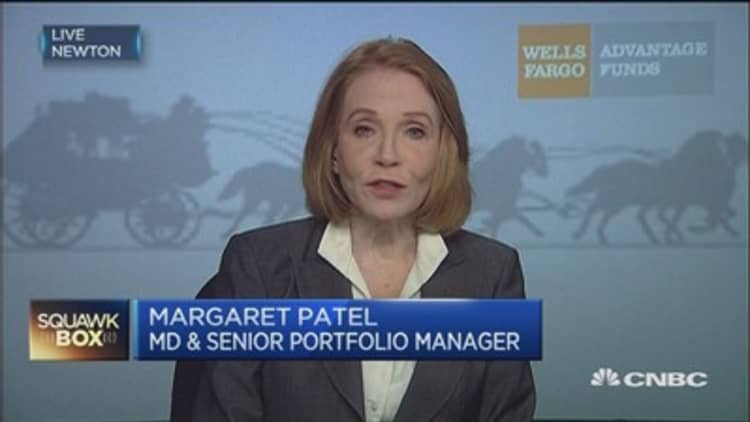Traders make consistent money because they are not wedded to a stock, a position or a view on the markets. When facts change, traders change their position.
It's not a very satisfactory situation for people who want certainty or firm predictions but it is very profitable. This is the reason traders use stop-losses while many investors do not even understand the concept, let alone use a stop.
Traders were called on to exercise this agility and flexibility this week when the dollar index staged a strong rally to close the week at $0.973.
The rally is not so important. What's important is the strong close above the downtrend trend line A.
Does this mean our analysis from last week is incorrect? The analysis is correct, but our conclusion that there was, on balance, a bearish bias, was incorrect. The symmetrical triangle is a pattern of indecision. The potential to break up or down from the pattern is around 50 percent either way. We used the dips below trend line B to identify a slight shift in the balance of probability towards the bearish side.
Analysis is one step. Trading is the next step. We noted last week that chart pattern analysis provided a good strategic understanding of the market, but traders wait for confirmation activity prior to taking a position.
In this case, traders did not get confirmation of the bearish view. The U.S. dollar index - which measures the greenback's value against a basket of currencies - did not move below trend line B so no entry signal was generated, which is the key difference between aggressive and conservative trading.
Aggressive traders move in anticipation of a pattern breakout. In a strong pattern with a high probability of moving in one direction, it's suitable to take an aggressive position in anticipation of the breakout. But in weak patterns, such as the symmetrical triangle, it is more prudent to wait until the breakout is confirmed.
Read MoreWhy the euro-dollar rally won't last
The conservative trader in the dollar index waited for confirmation of the breakout. This week, the trader has confirmation to go looking as the dollar index moved above the value of trend line A. The upside target is $1.035.
Now, we'll update the analysis from last week.
One of the weakest patterns in technical analysis is the equilateral or symmetrical triangle pattern. It's weak because unlike the other types of triangle patterns, the symmetrical triangle pattern does not give a clear advance indication of the direction of the breakout. It is, above all, a pattern of indecision.
Lacking any other features, the symmetrical triangle shows a situation in which neither bulls or bears can gain dominance. But once the breakout starts, the move is often very quick Traders expect a fast move towards the $1.035 target.

Like all triangle patterns, the vertical base of the triangle is measured and this value is used to set the upside and downside targets. The potential upside target is near 1.035. This target is calculated from the apex of the triangle. This is a weekly chart and the apex of the triangle develops around point where the price move above the trend line.
Read MoreDollar rally presents 'rare' short opportunity: Trader
This type of chart analysis on an FX chart carries one important caveat; when chart patterns are the product of trading in a single equity the reliability of the pattern and its projected targets is very high. This is because these equity patterns reflect the psychology of a well-defined group of buyers and sellers. When similar patterns appear in FX charts the results are applied with more caution because the FX market includes a significant number of players who are forced to take the opposite side of their client positions. This forced market participation dilutes the psychology of the FX market and so reduces the reliability of pattern analysis.
Here we can say the breakout will be strong and that there is a high probability the dollar index will move above $1.00 and potentially as high as $1.035.
Daryl Guppy is a trader and author of Trend Trading, The 36 Strategies of the Chinese for Financial Traders –www.guppytraders.com.. He is a regular guest on CNBCAsia Squawk Box. He is a speaker at trading conferences in China, Asia, Australia and Europe.


